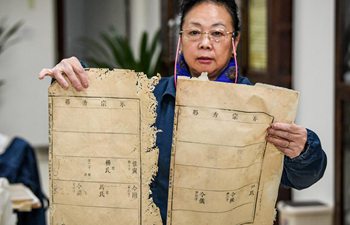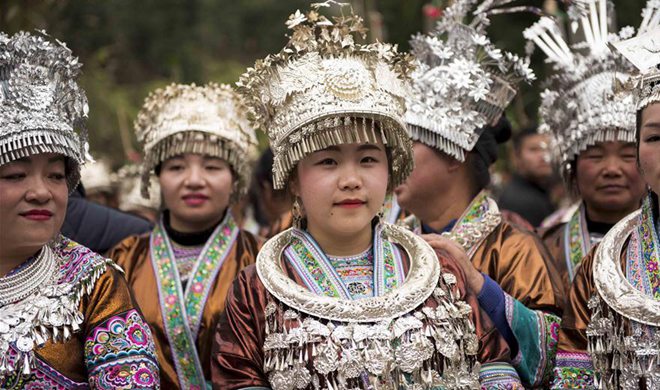TIANJIN, Dec. 23 (Xinhua) -- Every time Feng Jicai, an acclaimed Chinese writer in his 70s, walks through a Chinese village, he becomes deeply concerned.
Skilled at portraying characters in rural China, Feng knows that hundred-year, or even thousand-year old villages, are slowly disappearing.
In sharp contrast to the thriving megacities packed with high-rises, China, once an agricultural state with a civilization going back 5,000 years, is losing its villages.
These old villages, which witnessed the heyday of ancient Chinese culture, feeling the sorrows and falls of many dynasties, are part and parcel of Chinese history.
But modern lifestyles are squeezing their existence. Young villagers are leaving for the bigger world, where they can achieve bigger dreams than in their village homelands.
Feeling the pinch, Chinese authorities initiated an archive-building and survey program in 2012 to catalogue ancient Chinese villages, led by Feng, who is also a counselor to the State Council.
Over 4,150 villages have been listed as national traditional villages, and 223 of them have been catalogued for preservation. The progress is encouraging, but Feng dares not slow down.
"About 80 to 100 villages are disappearing in China every day. From 2000 to 2010, a total of 900,000 villages disappeared," Feng said. "Preserving villages preserves our country. It shows our respect for culture."
HOW TO PROTECT THE VILLAGES
But even for those under protection, the situation is not satisfactory.
"Overdevelopment has become a cliche in the stories of reviving traditional villages," Feng said. "Some villages move away local residents and hand land to tourism companies to build homestays. They even make up fake folktales to attract tourists."
"These villages often end up with the same faces, and if the situation continues, we might lose them again," Feng said.
The make-up of village populations also causes difficulties.
Earlier this year, a group of researchers went to Da Pin Village in northern China's Shanxi Province. The 1,500-year-old village only had 16 residents, mostly women and the elderly.
"A village is a community. If the residents cannot make their living, it is natural for the youth to leave and the villages to become empty," Feng said.
"As urbanization accelerates, conflicts between traditional villages and modern life grow, causing the collapse of traditional culture. This is a dilemma," said Pu Jiao, deputy director of the center for traditional village protection and research.
It will be almost impossible to revive the villages without local people, as Feng knows only too clearly.
"We must work out a way to find locals a stable source of income, upgrade facilities, offer educational and medical support to arouse their cultural consciousness," Feng said. "The recent 'toilet revolution' is a good step."
In the meantime, efforts to promote village culture continue. In November, a virtual museum was established to use video, three-dimensional images and other multi-media to record villages with distinct regional or ethnic features.
Visitors can access the museum online to check traditions, buildings and even lifestyles of the villages, and hopefully play a role in keeping them alive.
"There is no fixed pattern in the conservation of villages. We should accumulate all manners of resources and broaden the mindset of local officials," Feng said.

















